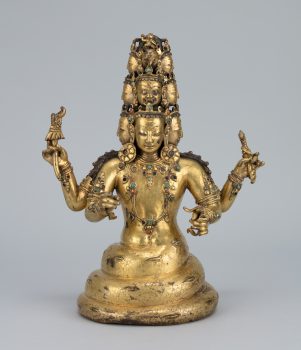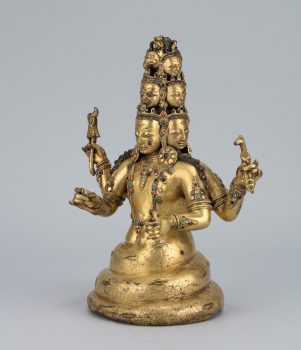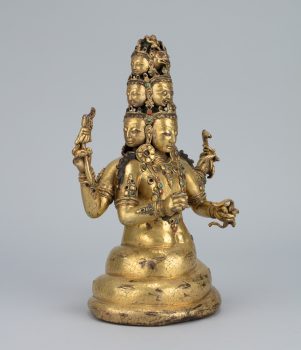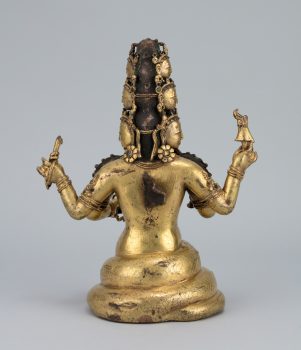Tibet
15th century




Tibet
15th century




Rahula is an Indian cosmological deity, a personification of eclipses, and an important protector deity of the Nyingma School of Tibetan Buddhism. Here he is shown with nine heads, four arms, and the lower body of a coiled snake adorned with eyes. His ninth head on the top center of the stack is a raven and a tiny figure of the bodhisattva Vajrapani stands on it. Vajrapani serves as a reminder to the worldly deity that he is still being overseen by an enlightened power. Rahula is considered extremely terrifying and is believed to cause strokes in those who perform rituals incorrectly. This bronze sculpture counts among the best representations of this deity known, striking an elegant balance between the tower of heads, four-armed human torso, and coiled snake body. It demonstrates the continuing importance of Nepalese craftsmanship in Tibet, as famously represented by the sculptures of Densatil Monastery in the Tsang region, central Tibet, to which this sculpture has been attributed.
A religious movement that originated in India around the fifth to seventh century with sacred writings and esoteric teachings and practices transmitted from teacher to student through initiation. These remain an important part of Hinduism and Buddhism today.
A virtuous feeling and deep respect toward an authentic teaching, teacher, or path. Buddhists believe that expansive study, analysis, and meditation are essential steps for cultivating a healthy and enduring devotion.
Protectors of Buddhist teachings who destroy obstacles that impede the path to enlightenment. The more frightening and gruesome their appearance, the greater their power.
Today, Tibetans primarily inhabit the Tibetan Plateau, situated between the Himalayan mountain range and the Indian subcontinent to the west, Chinese cultural regions to the east, and Mongolian cultural regions to the northeast. During the 7th to 9th century, Tibetan rulers expanded their empire across Central Asia, and established Buddhism as the state religion.
Get the latest news and stories from the Rubin, plus occasional information on how to support our work.